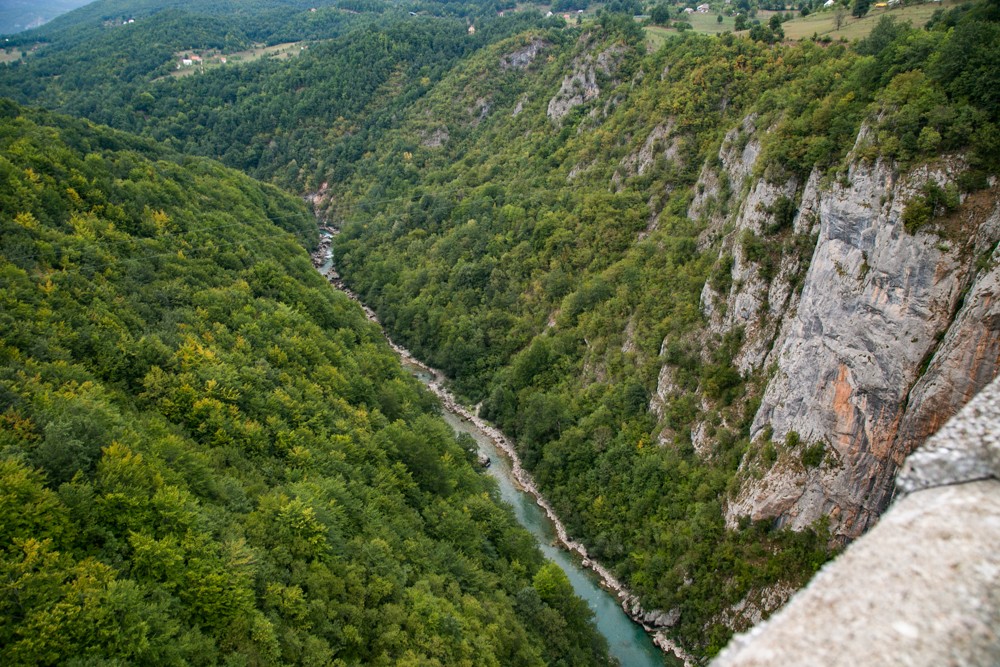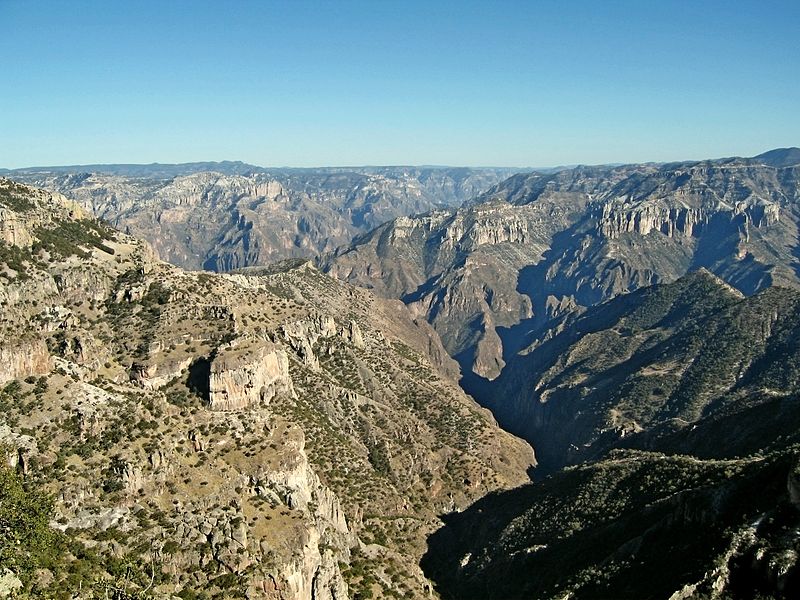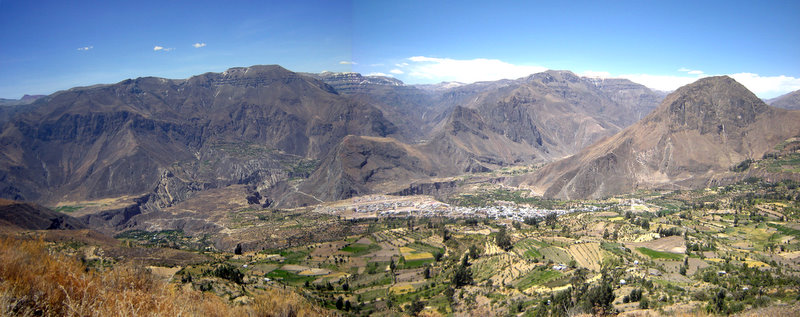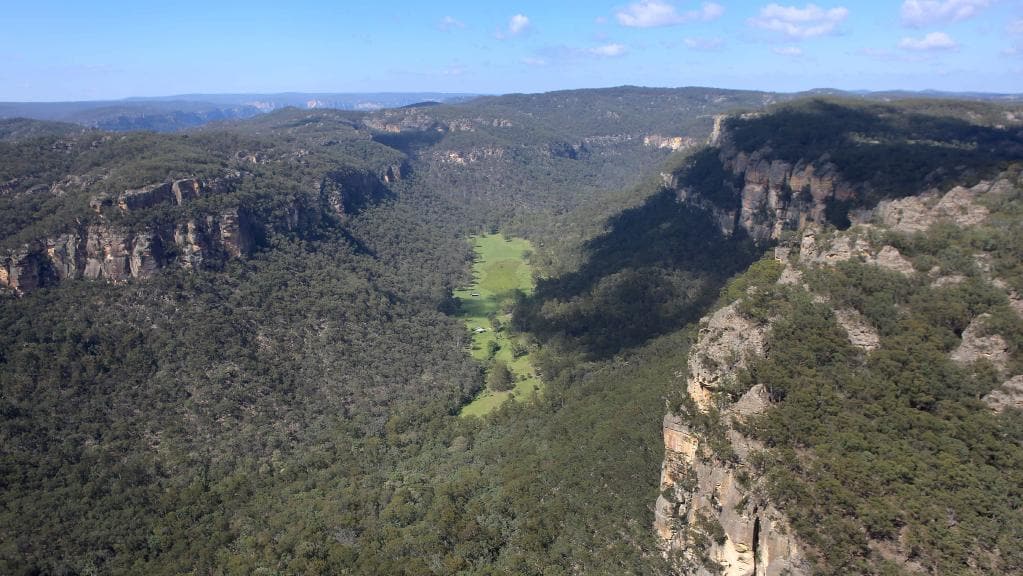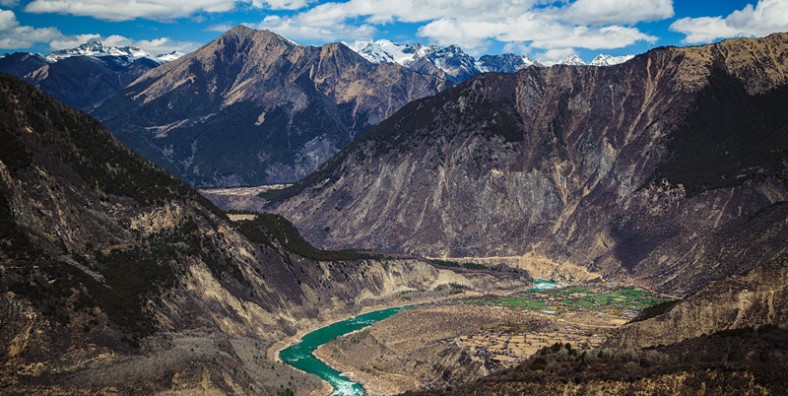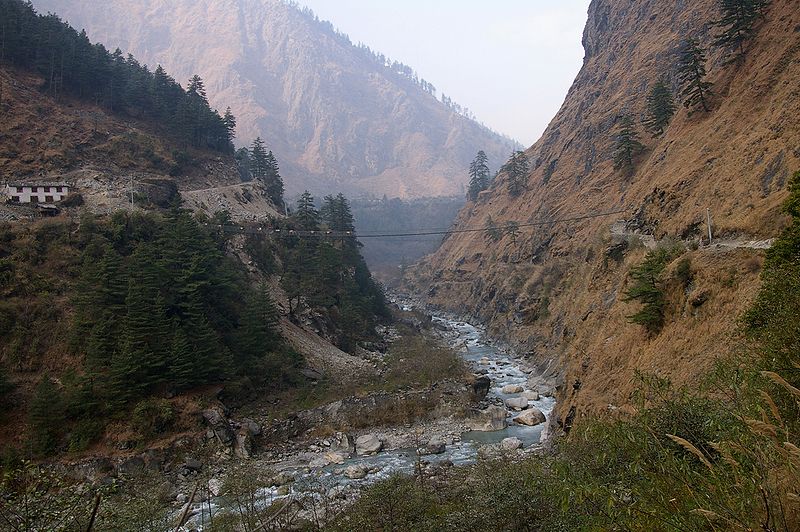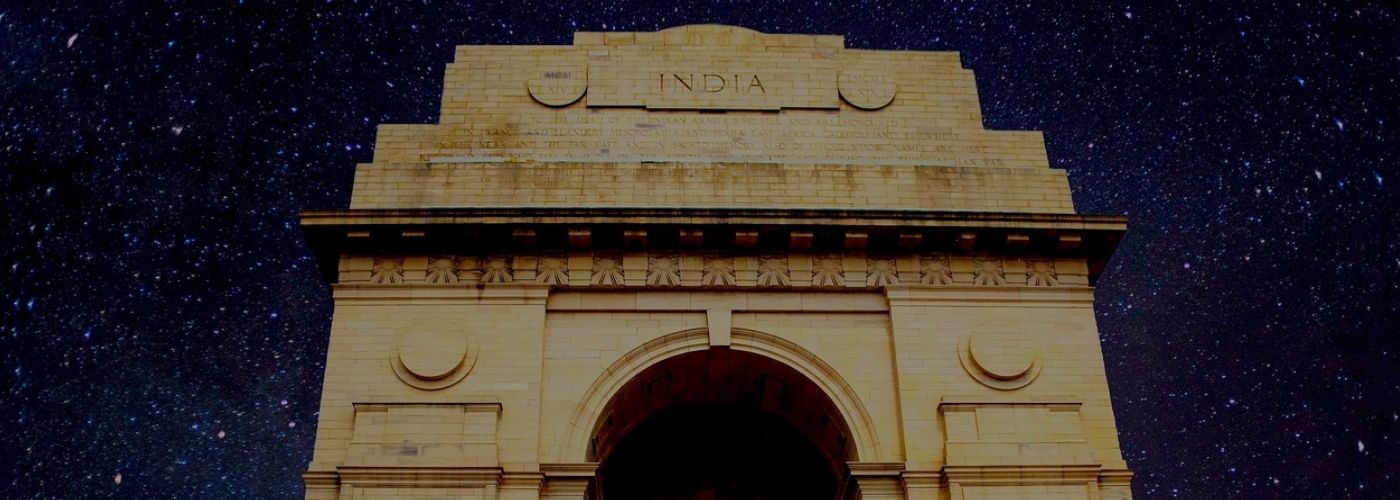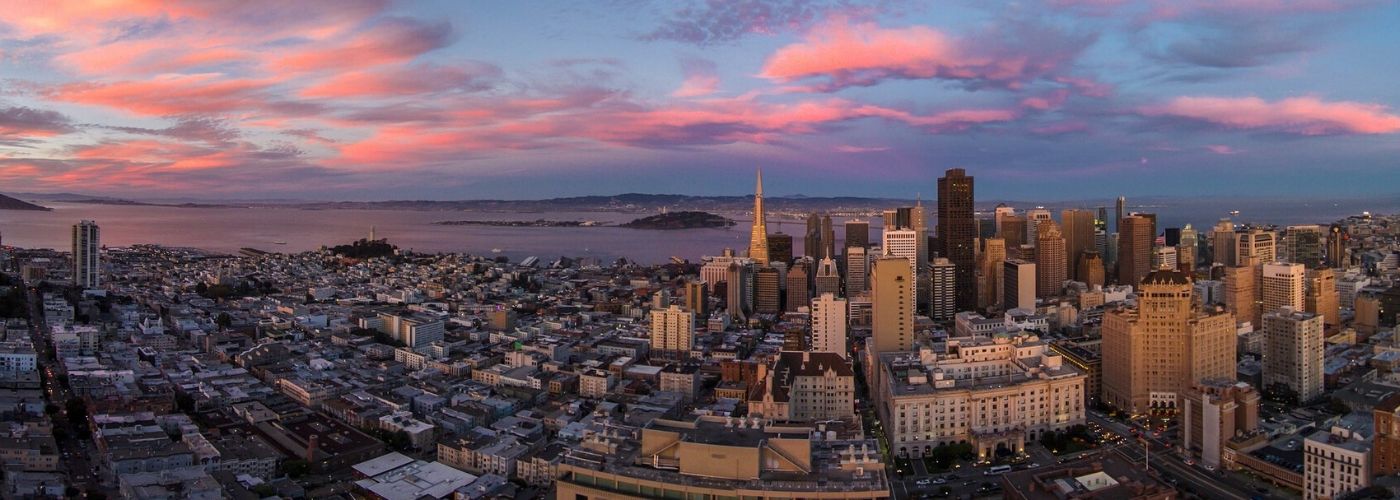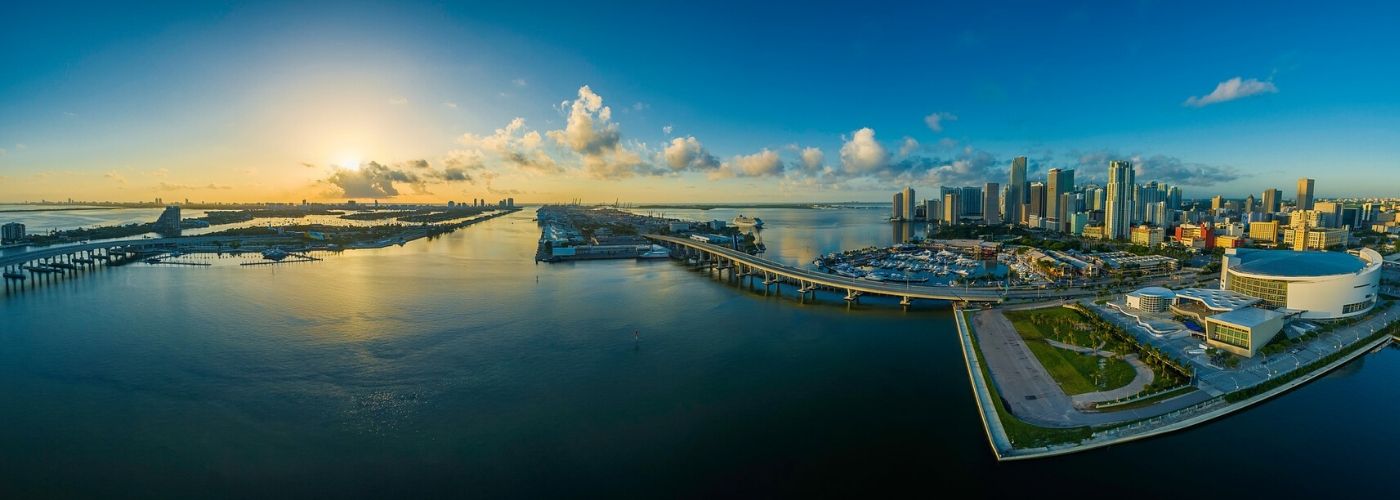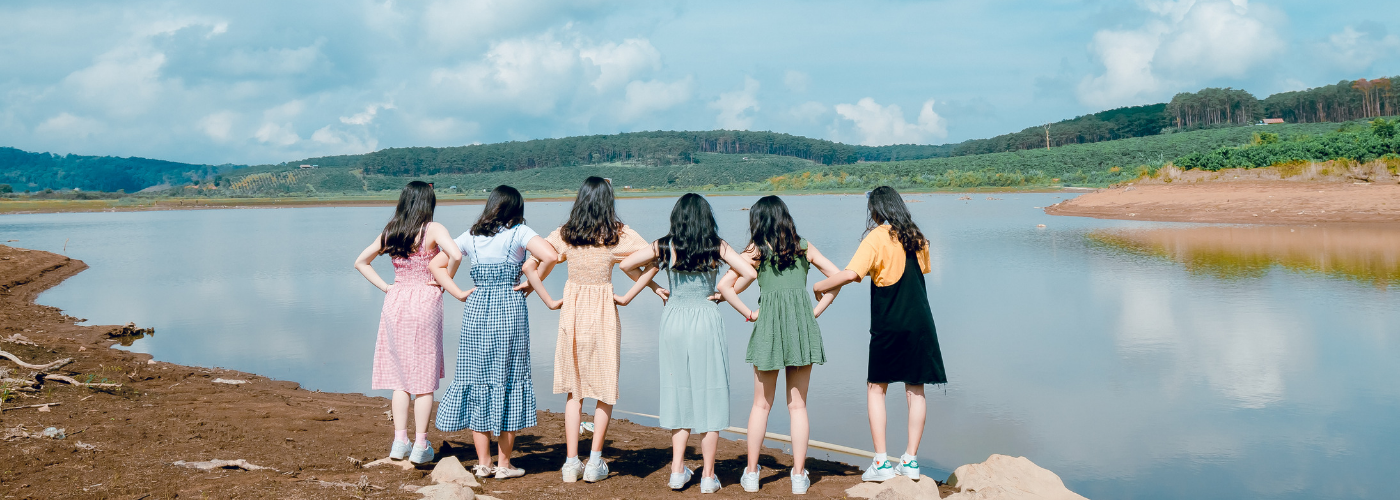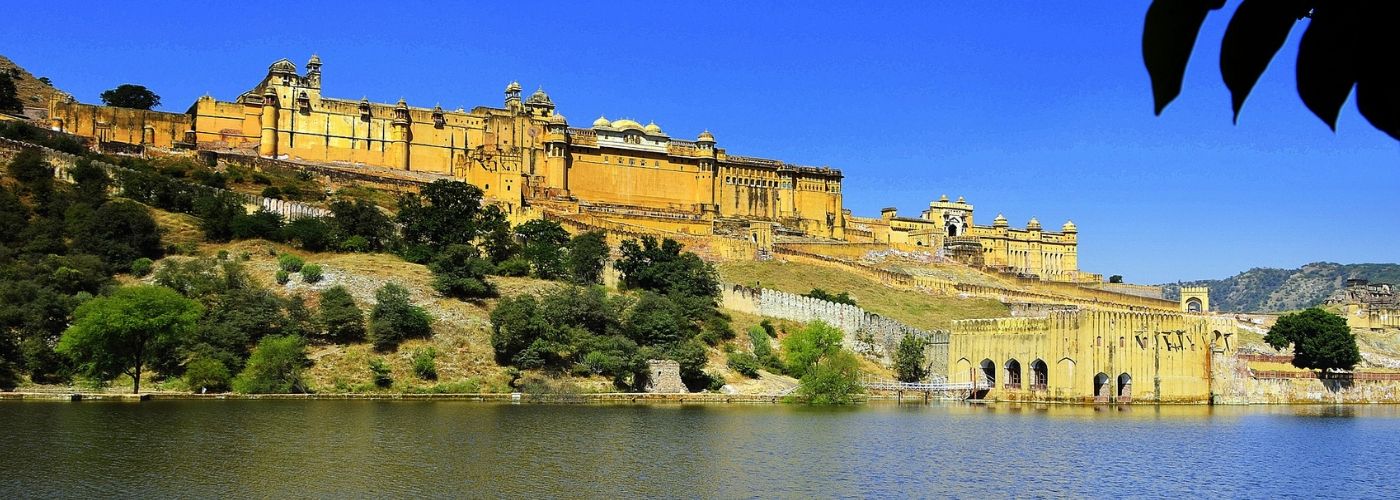Nature always keeps surprising us with its different mesmerizing creations. There are some places in the world that are unreachable but most beautiful. I think these places are so beautiful because of the non-interference of humans. Some of the canyons also come on the list of these remote places. You can see canyons from a distance or only from a few points.
Canyons are deep splits in the plateau, between cliffs or escarpments, and usually formed over a period of thousands of years usually by erosion from a river. A canyon or gorge can be defined as “large” based on its depth, length, or width, which makes it difficult to sort. Although it is usually the overall dimensions of the canyon are considered relative to other competitors.
There are a good number of gigantic gorges in the Himalayas, but since most of them are inaccessible even for an expedition (much less for travel), they are not considered candidates for this competition of the biggest Canyons in the world.
So, we curated this list of the largest canyons of the world in increasing order of their length, breadth, and depth.
Also see: World’s Smallest Mountain
Largest Canyons of the World
Here is the list of the largest canyons in the world in increasing order of their length. So, the last one on this list is the biggest Canyon in the world. Let’s have a look at this list:
12. Verdon Gorge, Europe
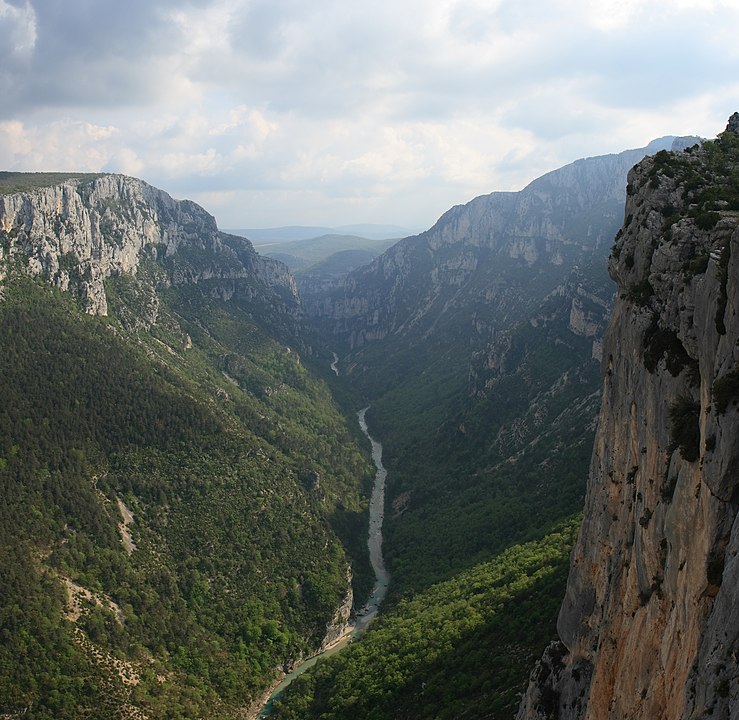
The Verdon Gorge, known as Gorges du Verdon in French, is a long and deep river canyon found in Southeastern France, in the Provence-Alpes-Côte d’Azur region. It stretches about 25 kilometers (around 15.5 miles) and drops to about 700 meters (0.4 miles) deep. The Verdon River formed this canyon, named after its stunning turquoise-green color, which is a special feature of this place.
The river, cutting through the limestone mass between the towns of Castellane and Moustiers-Sainte-Marie, has created a deep ravine reaching 700 meters. At the end, the Verdon River meets the man-made Lake of Sainte-Croix after the canyon ends.
11. Tara River Canyon, Montenegro
The twisting, turning curves of the Tara River Canyon in Montenegro, make it the deepest river gorge in all of Europe. Located in the mountainous Durmitor National Park, Tara River runs through the Canyon and it is the longest canyon in Europe. At its deepest point, the canyon falls to 4,265 feet (1,300 m).
The canyon is prime ground for white water rafting, and tourists flock here in the summer months for the thrill. A point on the mountains of Durmitor, called Curevac, stands at 1625 meters high and presents a panoramic view of the length, a stretch of around 50 miles (82 km), and the windy depths of the canyon. One can take a 10 km hike from the town of Zabljak among the mountains and forests leading to the gorgeous gorges. Even from the highest peaks, you will receive the thundering sound of more than 40 cascades plunging into this amazing canyon.
10. Blyde River Canyon, South Africa
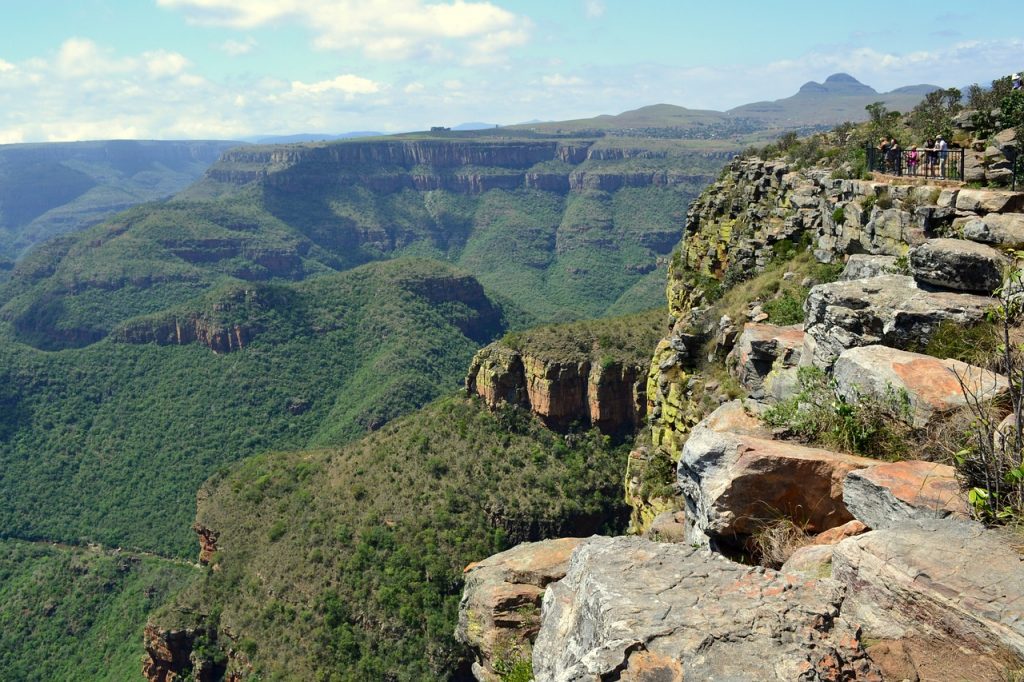
Blyde River Canyon in Mpumalanga, South Africa is known to be not the largest but the greenest of its kind. The 26 km (16 miles) long gorge is rich in a variety of plant life supported by different climate conditions and soil types over a range of altitudes. Over an average depth of 762 m, the deepest part of the canyon is said to be from the top of Mariepskop Mountain down to the river’s exit, with a total drop of 4,500 feet (1,372 m).
A variety of fauna thrives around the rivers, waterfalls, and the wetlands of the Swadini Dam including hippopotamuses and crocodiles. Because of its rich florae, birds can find almost every type of habitat that suits them, and all of this is preserved in the Blyde River Canyon Nature Reserve. Over the border of Mozambique, the Blyde River Canyon offers some of the most incredible views of nature in South Africa.
Also see: Tallest Waterfalls In The World
9. Copper Canyon, Mexico
A coppery green hue found on the walls of these canyons earned it the name of Barranca del Cobre or Copper Canyon. A collection of six canyons formed by six rivers is a part of the Sierra Madre Occidental mountains in the state of Chihuahua in northern Mexico. 6164 feet deep Barranca de Urique is considered the deepest canyon in the system.
Copper Canyon is rich in wildlife and is a UNESCO World Heritage Site that helps in preserving some of the endangered species within the valley walls. The Chihuahua al Pacífico Railroad, popularly known as El Chepe, is a train route that runs along the canyons starting from Los Mochis to Chihuahua city. This rail line offers one of the most spectacular railway experiences in the world, with ecstatic scenic views, especially between El Fuerte and Bahucivo where the train rapidly climbs many thousands of feet and directly looks over the canyon.
8. Colca Canyon, Peru
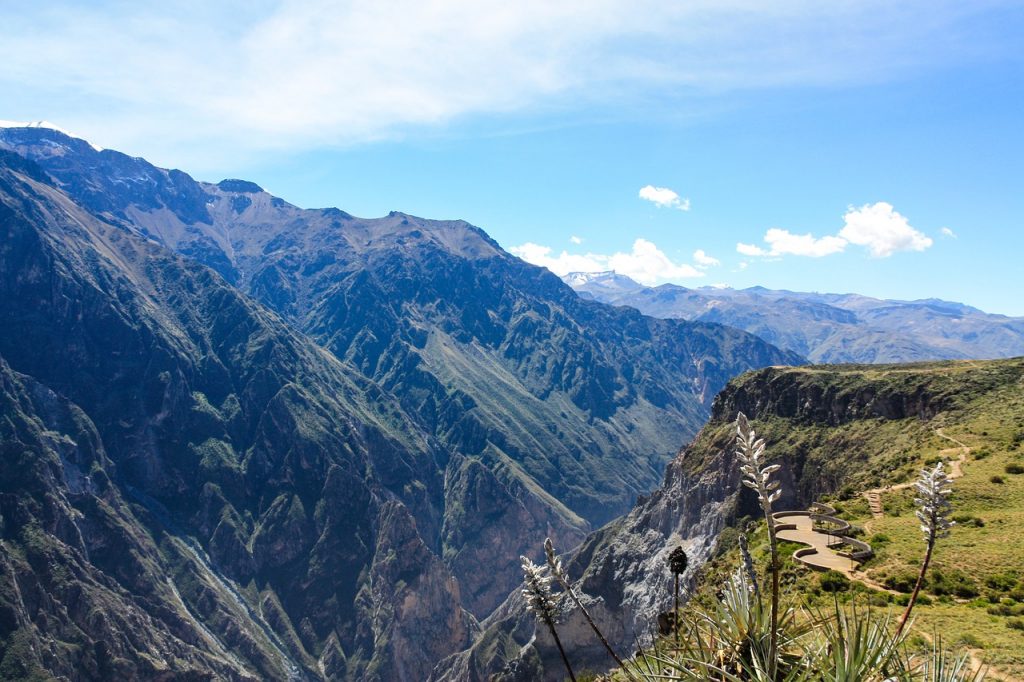
The Colca Canyon in southern Peru is one of the most popular tourist destinations in the country. Dropping to a depth of 1000-2000 m (3300-6600 ft), this wonder is viewed best from a viewpoint called Cruz del Condor. A variety of birds including the mighty Andean Condors, flamingos, the giant hummingbird, eagles, and fauna like the vicuñas (a relative of alpacas) can be seen from Cruz del Condor in addition to archeological sites and stepped agricultural terraces dating back to the Incans.
Tourists can reach Chivay, the hub of Colca Canyon, too from Arequipa via a 3.5-hour bus ride across the plateau, rising to a height of 11,500 ft to Chivay. In the town of Chivay, people can enjoy local food at restaurants, and hotels, shop the local craft, enjoy the La Calera hot springs, and have a view of several steep volcanoes from “Mirador de Los Volcanes”.
7. Cotahuasi Canyon, Peru
Cotahuasi Canyon plummets to 11,598 feet (3,535 m) at its deepest point making it twice as deeper as the Grand Canyon. The Cotahuasi River eroded the region between two mountain ranges, the Coropuna and the Solimana, carving out one of the deepest canyons in the world. Cotahuasi Canyon is known for its waterfalls, steep cliffs, and its indigenous people who follow a traditional life.
The route to reach the canyon is rather remote and one can expect a 10-12-hour bus ride along a single route that connects Cotahuasi to Arequipa. The dry summer season is the best time to trek and hike the canyon because the comfortable temperatures during the day are ideal to enjoy the views that few travelers get to see.
6. Indus Gorge
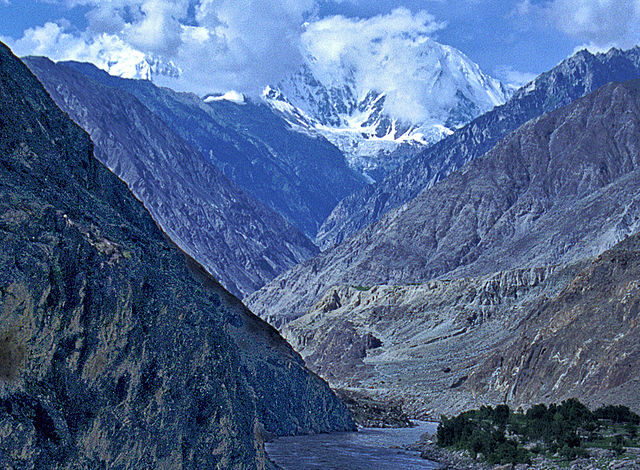
The Indus Gorge is made by the Indus River as it travels near the Nanga Parbat mountain in the Greater Himalayas. It’s in Pakistan before the river spreads out into the plains of Punjab. The gorge is very deep, about 14,800 to 17,100 feet near the Nanga Parbat. Because of the river’s movement in that area, a lot of rock erosion happens, and it brings rocks from the middle and lower parts of the Earth’s crust up to the surface. Gilgit is the furthest western part where the Indus River gets water from.
5. Fish River Canyon, Namibia
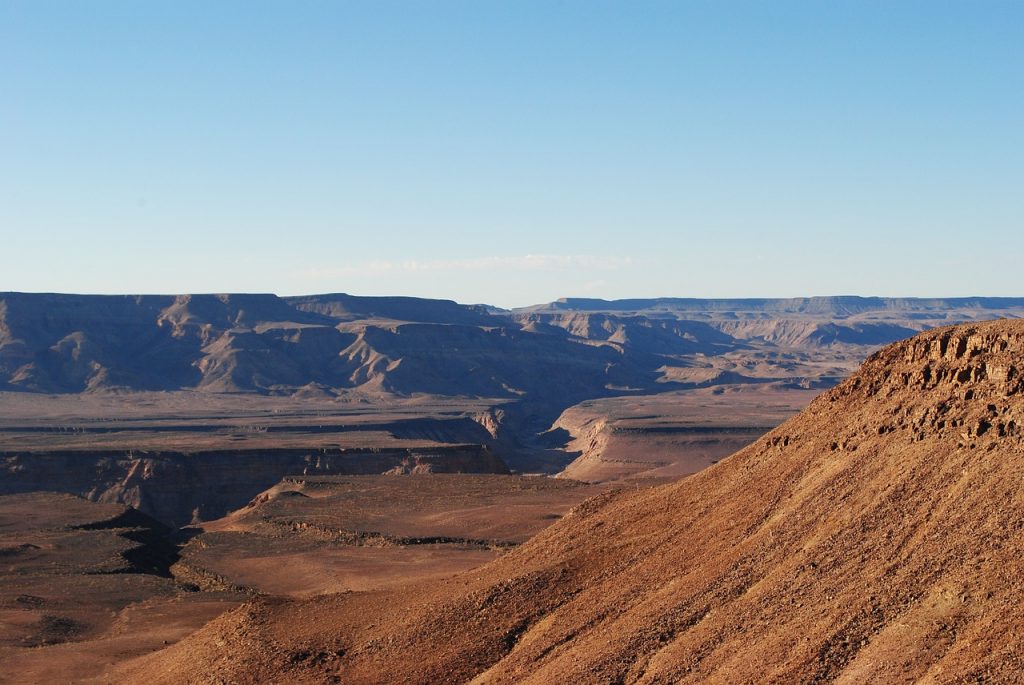
Fish River Canyon in Namibia is the largest canyon in Africa. Carved out by the 160 km long and gigantic Fish River this canyon stretches 17 miles (27 km) wide and 1804 feet (550 m) deep. The rocky ravine is an attraction for hikers and tourists too because of the magnificent views. While not as deep, an area of 5900 sq. km makes it one of the largest. Tourists can reach the canyon via car along a dirt road from Hobas (the northern end of the canyon).
Since the canyon is a part of the Ai-Ais Richtersveld Transfrontier Park, there is a small entrance fee at Hobas (40 Namibian Dollars (N$) pp for foreigners, plus 10 N$ per car as of February 2018). From March to September, hikers can hike a very tough 85-km trail from Hobas to the Park, the Fish River Canyon Trail is one of the most popular hikes in Southern Africa. Some more enthusiastic hikers can run the perilous marathon held every year through these rough terrains in extreme conditions.
Read More, Adventurous and Best Safaris in South Africa to Visit
4. Capertee Valley, Australia
Australia is known for its arid and dry desert-like geography and the sandstone plateaus with its mountain ranges. Out of many other natural wonders on this island, this majestic canyon stands out as the largest in Australia with a rough rocky landscape and a valley covered in a blanket of dense trees. Capertee Valley is wider and nearly 0.6 miles (1 km) longer than the Grand Canyon but not as deep because of its age. In terms of width, this canyon is the second largest in the world.
Because of its size, there are three national parks within the valley including some World Heritage Listed wilderness, exquisite and endangered birds for bird-watching, and sandstone escarpments eroded into different shapes. The Capertee River has been carving its way through Permian and Triassic rock at the base of the canyon, for millions of years.
3. The Grand Canyon, USA
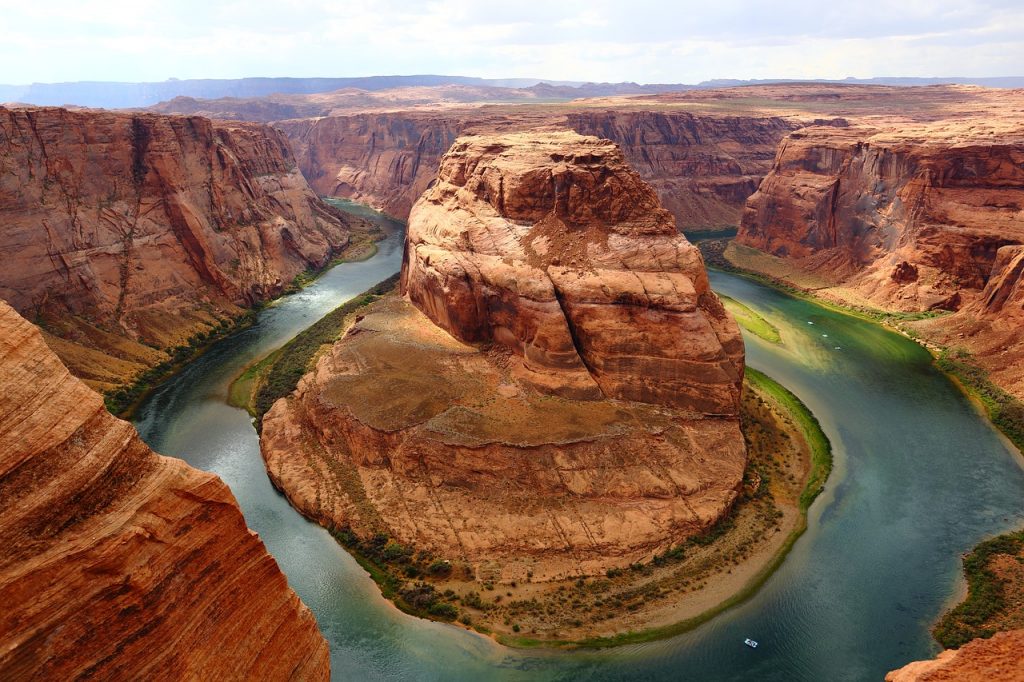
The most famous ravine, by all means, the Grand Canyon of Arizona is one of the largest Canyon in the world but not the largest one. It measures 6,000 feet (1,828 m) in depth and stretches over 277 miles (445 km) and is one of the most visited national parks with over 6 million visitors each year.
This colorful canyon is 12,000 years old and it is still ravishing in its psychedelic colors and park vegetation. The Colorado River cuts through the valley, twisting and turning for centuries, giving the rock formation their peculiar shapes and forms on the bed. The river changes colors every season, from emerald green to brown and blue which are difficult to see from the tourist spots, but hikers can take one of many predefined trails through the rocks to the bottom and even camp overnight.
Interestingly, the two major viewpoints of the canyon, the North Rim and the South Rim offer very different experiences of the Grand Canyon from heights of 1000 feet to an observation deck at 5000 feet on the South Rim. One can take a guided tour bus from Las Vegas, pass the Hoover Dam along the way, and reach the canyon. Once they reach the Grand Canyon National Park, there are many options apart from riding a guided bus tour, like a Humvee tour, private cars, or even a helicopter tour right through the Grand Valley.
2. Yarlung Tsangpo Grand Canyon, Tibet
This debate has always been going on that which is the world’s largest, longest, or deepest canyon. The Yarlung Tsangpo Grand Canyon in Tibet is also part of this debate but this is for sure that the Yarlung Tsangpo Grand Canyon is the deepest canyon in the world.
Not the most famous Grand Canyon out there, but the mightiest canyon in the world is high in the Himalayas, with an average depth of 16000 feet (4876 m). The deepest depth of this canyon is 6,009 m (19,714 feet) which makes i the deepest canyon in the world. The fact that the canyon is so remote, inaccessible, and has its own unpredictable microclimate adds to its unpopularity as a tourist destination. The aerial view of the Yarlung Tsangpo River within the canyon looks like a microcosm and naturally realized fractal shape surrounded by snow-capped Himalayan peaks.
The gorge begins near Mt. Kailash and stretches out for nearly 500 km into Northern India. The river enters Arunachal Pradesh and becomes the Brahmaputra. Such vastly spread areas with varieties of climate conditions give a home to several indigenous wildlife species. It is also known as the Tsangpo Canyon, Brahmaputra Canyon, or Tsangpo Gorge relative to the area where it passes.
The canyon bends around the mountains of Namcha Barwa and dives down to 19,714 feet (6,009 m) at one point, making it the deepest canyon on Earth. Access to the canyon from the Tibetan side is regulated by the Chinese government for foreign hikers and explorers, which makes it a pain to access it even more than it already is geographically.
1. The Kali Gandaki Gorge, Nepal
Kali Gandaki Gorge in Nepal is the world’s largest canyon in the world. Sandwiched between the Himalayas, the Kali Gandaki Gorge of Nepal is surrounded by the imposing mountains of Annapurna and Dhaulagiri, rising up for more than 8,000 m over the gorge. The gorge was carved between these mountains by the Kali Gandaki River, which is older than the mountains themselves. Thus, the river and the peaks have been sacred sites for many of the locals there.
The depth of the canyon is debated because of the range of mountains of different heights surrounding it but it is agreed that it is greater than 6000 m (22,000 feet), making it one of the deepest (and because of precious stones in the river, valuable) canyons on Earth.
Trekkers on the Annapurna Circuit get a good view of the Kali Gandaki, with the western half of the route following the gorge between the mountains.
Read More, Grand Canyon Skywalk:- A Complete guide
Apart from this, Greenland’s Grand Canyon was discovered in 2013 and is 466 miles (750 km) long. This makes it the longest canyon in the world. Arguably, the gorges around the Indus River go to a depth of 14000-15000 feet, making them the largest in the world. But they are not part of a single system like the canyons and gorges in this list. The river passes through several such gorges near the Nanga Parbat mountain from Tibet into Ladakh in India.
A. Most people think that the Grand Canyon of northern Arizona in the United States is the largest canyon in the world. But it’s not true. The Kali Gandaki Gorge or Andha Galchi is the canyon of the Kali Gandaki (or Gandaki River) in the Himalayas in Nepal. It is the largest canyon in the world. Yarlung Tsangpo Canyon is the deepest Canyon in the world with 6400 m depth. People usually misunderstand between the largest and the deepest.
A. The Grand Canyon of northern Arizona in the United States is the second-largest Canyon in the world with an average depth of 1,600 m and a volume of 4.17 trillion cubic meters. It is located in New South Wales, Australia.

